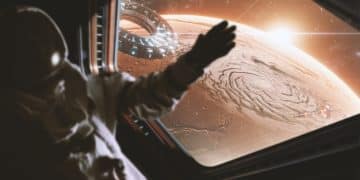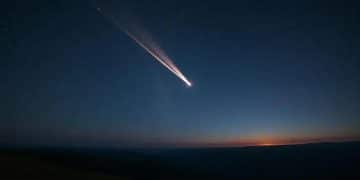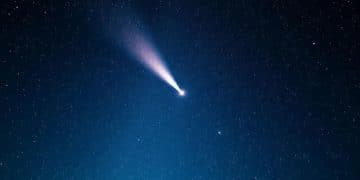NASA’s Asteroid Watch: Defending Earth in the Next 5 Years
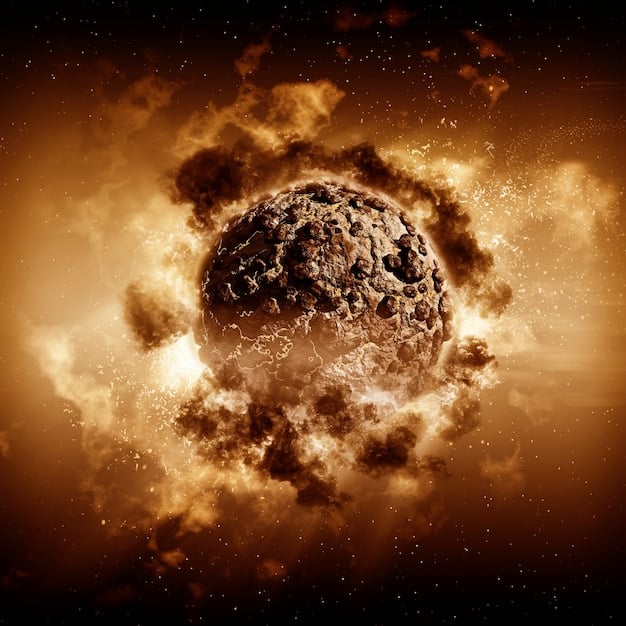
NASA’s Asteroid Watch program focuses on detecting and cataloging Near-Earth Objects (NEOs) to assess and mitigate potential impact risks, employing advanced technologies and international collaborations to safeguard our planet over the next five years.
The cosmic neighborhood can be a hazardous place, and asteroids are frequent travelers. NASA’s Asteroid Watch: What is NASA’s Plan for Near-Earth Object Defense in the Next 5 Years? is a critical effort to catalogue and understand these celestial bodies, particularly those that could pose a threat to our planet.
Understanding the Near-Earth Object (NEO) Threat
Near-Earth Objects (NEOs) are asteroids and comets whose orbits bring them within 30 million miles of Earth. While most pose no threat, a small percentage could potentially impact the planet, making it crucial to identify and track them.
What Makes an Asteroid a Threat?
The size and composition of an asteroid, along with its trajectory, determine the level of threat it poses. Larger asteroids can cause significant regional or even global damage upon impact.
- Size: Larger asteroids (over 1 kilometer in diameter) are considered global threats.
- Trajectory: An asteroid’s orbit must intersect with Earth’s orbit to pose a threat.
- Composition: Some asteroids are more difficult to detect or deflect due to their composition.
NASA’s primary goal is to identify and catalogue at least 90% of NEOs larger than 1 kilometer. This comprehensive survey allows for early warnings and mitigation strategies to be developed.
NASA’s Asteroid Detection and Tracking Systems
NASA employs a network of ground-based telescopes and space-based observatories to detect and track NEOs. These systems are constantly scanning the skies, looking for new objects and refining the orbits of known asteroids.
Ground-Based Telescopes
Telescopes like Pan-STARRS in Hawaii and the Catalina Sky Survey in Arizona play a crucial role in discovering new NEOs. They operate by repeatedly imaging the same areas of the sky and looking for objects that have moved relative to the background stars.
Space-Based Observatories
Space-based observatories, such as the Near-Earth Object Wide-field Infrared Survey Explorer (NEOWISE), offer a unique vantage point for detecting NEOs. They can detect infrared light, allowing them to find asteroids that are difficult to see with ground-based telescopes.
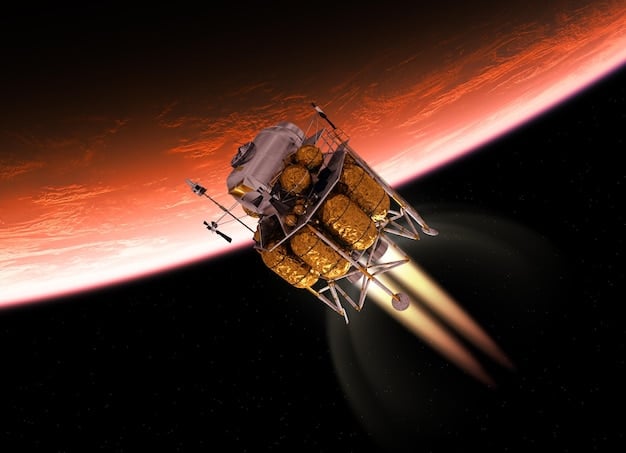
These systems work together to provide a comprehensive view of the NEO population, allowing scientists to assess the potential risks and plan for future missions.
The Double Asteroid Redirection Test (DART) Mission
The Double Asteroid Redirection Test (DART) mission was a groundbreaking demonstration of asteroid deflection technology. It involved intentionally crashing a spacecraft into an asteroid to alter its orbit.
The Target: Dimorphos
DART targeted Dimorphos, a small moon orbiting the asteroid Didymos. This binary system allowed scientists to precisely measure the change in Dimorphos’ orbit after the impact.
The Impact and Results
In September 2022, DART successfully impacted Dimorphos, shortening its orbital period by 32 minutes. This result demonstrated the feasibility of using kinetic impact to deflect asteroids.
- Successful deflection: DART proved that an asteroid’s orbit can be altered through kinetic impact.
- Data collection: The mission provided valuable data on the composition and structure of asteroids.
- Future applications: The DART mission paves the way for future asteroid deflection missions.
The DART mission was a major step forward in planetary defense, providing valuable insights into how we can protect Earth from potential asteroid impacts.
The NEO Surveyor Mission: A New Era of Detection
The NEO Surveyor mission is a planned space-based infrared telescope designed to detect and characterize the majority of potentially hazardous NEOs. It represents a significant upgrade in NASA’s asteroid detection capabilities.
Capabilities and Objectives
NEO Surveyor will be equipped with advanced infrared sensors that can detect asteroids more effectively than current systems. It will also be able to measure the sizes and compositions of NEOs, providing critical information for assessing their potential threat.
Expected Discoveries
NEO Surveyor is expected to discover tens of thousands of new NEOs, significantly increasing the number of known potentially hazardous asteroids. This will provide more time for planning and implementing mitigation strategies.
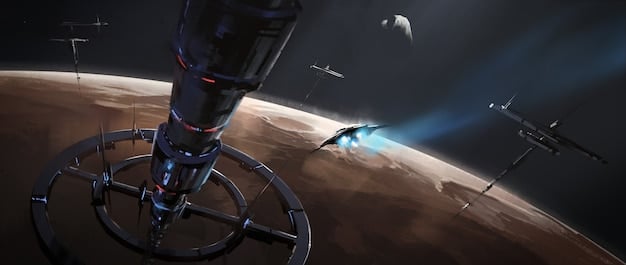
The mission is projected to launch no earlier than 2027 and will transform our understanding of the NEO population, enhancing our ability to protect Earth.
International Collaboration in Planetary Defense
Planetary defense is a global effort that requires international collaboration. NASA works closely with other space agencies and organizations to share data, coordinate observations, and develop strategies for mitigating asteroid threats.
Sharing Data and Resources
International collaborations like the International Asteroid Warning Network (IAWN) facilitate the sharing of data and resources among different countries. This ensures that all available information is used to assess and mitigate asteroid risks.
Joint Missions and Studies
Joint missions and studies, such as the Asteroid Impact & Deflection Assessment (AIDA) collaboration between NASA and the European Space Agency (ESA), combine the expertise and resources of multiple nations to address planetary defense challenges.
- Improved detection: Combining data from multiple observatories enhances our ability to detect NEOs.
- Coordinated response: International collaboration allows for a coordinated response to potential asteroid threats.
- Shared knowledge: Sharing research and expertise accelerates the development of planetary defense technologies.
By working together, nations can more effectively protect Earth from the dangers posed by asteroids.
Future Directions in Asteroid Defense
The field of asteroid defense is constantly evolving, with new technologies and strategies being developed. In the coming years, we can expect further advancements in detection, tracking, and deflection techniques.
Advanced Detection Technologies
Future detection systems may include more advanced space-based telescopes and radar systems that can detect smaller asteroids and determine their orbits with greater precision.
Improved Deflection Methods
In addition to kinetic impact, other deflection methods are being explored, such as gravity tractors, which use the gravitational pull of a spacecraft to slowly alter an asteroid’s path.
- Enhanced precision: New technologies will allow for more precise detection and tracking of NEOs.
- Diverse strategies: Multiple deflection methods will provide options for different types of asteroids.
- Proactive defense: Future missions will focus on proactively mitigating asteroid threats before they become imminent.
These future developments will further strengthen our ability to protect Earth from potential asteroid impacts.
| Key Point | Brief Description |
|---|---|
| 🔭 NEO Detection | NASA uses telescopes to find and track Near-Earth Objects. |
| 🚀 DART Mission | Successfully altered the orbit of asteroid Dimorphos. |
| 🛰️ NEO Surveyor | Future space telescope for enhanced NEO detection. |
| 🤝 International Collaboration | Global effort to share data and strategies on planetary defense. |
Frequently Asked Questions
▼
A Near-Earth Object (NEO) is an asteroid or comet whose orbit brings it close to Earth. These objects are monitored to assess any potential impact risk.
▼
NASA uses a network of ground-based telescopes and space-based observatories, such as NEOWISE, to scan the skies and detect NEOs by tracking their movement.
▼
The Double Asteroid Redirection Test (DART) mission was a NASA project that successfully demonstrated asteroid deflection by impacting the asteroid Dimorphos.
▼
The NEO Surveyor mission aims to detect and characterize most of the potentially hazardous NEOs using advanced infrared sensors to provide better threat assessment.
▼
International collaboration allows for the sharing of data, resources, and expertise, ensuring a coordinated global effort to detect and mitigate potential asteroid threats effectively.
Conclusion
NASA’s Asteroid Watch program is a comprehensive and evolving effort to protect Earth from potential asteroid impacts. Through advanced detection systems like NEOWISE and the upcoming NEO Surveyor, as well as groundbreaking missions like DART, NASA and its international partners are working to identify, track, and mitigate the risks posed by Near-Earth Objects, ensuring the safety of our planet for future generations.
